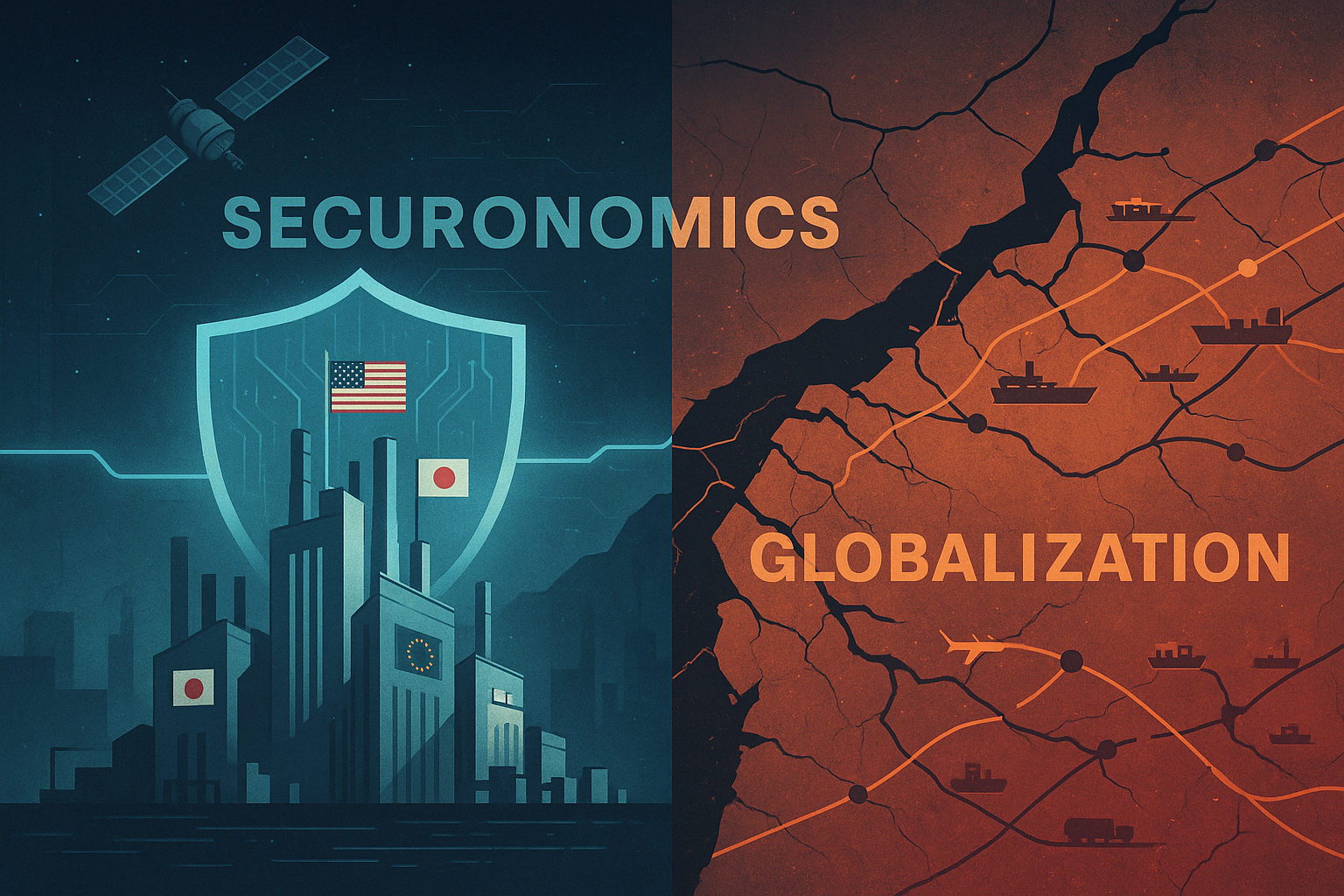In an increasingly volatile geopolitical landscape, governments around the world are reimagining how economic strategy should intertwine with national security—a philosophy encapsulated in the rise of “securonomics.” Once the domain of military analysts and policy wonks, the concept now sits at the heart of global investment decisions, transforming everything from semiconductor supply chains to energy infrastructure and cross-border capital flows. As countries look inward to secure strategic industries and reduce dependency on foreign powers, investors are being forced to adapt their portfolios to a new paradigm that blurs the lines between economics and defense.
Securonomics—coined to describe economic policies rooted in protecting national interests—goes beyond tariffs or subsidies. It’s about restructuring economies with resilience, autonomy, and long-term stability as north stars, even if that means sacrificing short-term efficiencies or open-market ideals. For investors, this means the familiar signals of economic growth and profitability are being supplemented—or even replaced—by political risk assessments, security doctrines, and industrial policy roadmaps. In this shifting terrain, understanding securonomics isn’t just a theoretical exercise—it’s essential for identifying risks and seizing new opportunities in a rapidly evolving global economy.
Why securonomics emerged from the shadows of globalization?

The rise of securonomics is not happening in a vacuum. It is a direct response to the vulnerabilities exposed by decades of hyper-globalization. For years, nations outsourced key industries in pursuit of lower costs and efficiency. But the COVID-19 pandemic and Russia’s invasion of Ukraine shocked the system, spotlighting how deeply intertwined—and fragile—global supply chains had become. Shortages of semiconductors, critical minerals, and even medical supplies ignited a sense of urgency among governments: economic interdependence, once a symbol of global unity, could be weaponized. The lines between allies and competitors blurred as access to essential goods became a geopolitical chess match.
In response, countries like the United States, China, Japan, and members of the EU have accelerated policies to “reshore” strategic industries and protect technological sovereignty. The U.S. CHIPS and Science Act and the Inflation Reduction Act are prime examples, channeling billions into domestic manufacturing and clean energy. Meanwhile, the European Union is crafting its own economic security strategy, emphasizing the need to reduce dependencies in key sectors. For investors, this shift means that geopolitics are no longer an external factor—they’re embedded into the investment logic itself.
Whether assessing a green energy startup in the Midwest or a rare earths supplier in Africa, the lens of securonomics now guides capital allocation decisions in ways previously unimaginable. Investors are no longer focused solely on scalability and market disruption; they must also evaluate how aligned a company’s mission is with national resilience goals, regional supply chain autonomy, and geopolitical alliances. In the case of a renewable energy venture in Ohio, considerations might include how the project reduces reliance on imported solar components or supports domestic grid stability.
How investment strategies are evolving in the securonomics era
The securonomics framework has upended conventional investment models, compelling fund managers, private equity firms, and institutional investors to rethink risk and reward. Portfolios once optimized for globalization—favoring emerging markets with low labor costs and deregulated environments—are being recalibrated to prioritize political alignment, regulatory stability, and domestic capacity-building. Sectors deemed “strategic”—like defense tech, renewable energy, semiconductors, and biotech—are seeing an influx of capital, often backed by government incentives or protected by national security provisions.
This pivot isn’t just about picking new winners; it’s about navigating new guardrails. For example, a hedge fund considering exposure to Chinese tech giants now must factor in U.S. export restrictions and the possibility of sanctions. Similarly, European investors in African mining operations must weigh not only commodity prices but also geopolitical alliances and infrastructure bottlenecks. The toolbox for analysis is expanding—traditional financial metrics are being augmented by political risk indices, sovereign investment priorities, and even cyber resilience.
Moreover, this climate is fostering a new kind of investor: one that blends macroeconomic savvy with geopolitical intelligence. Asset managers are increasingly hiring analysts with backgrounds in international relations, military strategy, and environmental policy. Startups that align with securonomic priorities—such as clean hydrogen, rare earth recycling, or cybersecurity for critical infrastructure—are receiving early-stage funding not just because of market fit, but because they advance national resilience. The line between public and private interest is blurring, and with that comes both opportunity and ethical complexity.
Long-term implications for global capital flows and financial power dynamics
As securonomics becomes institutionalized, its ripple effects are reshaping global capital flows and recalibrating financial power centers. Emerging markets that were once investment magnets due to low costs and high growth potential now face scrutiny over their strategic alignment. Countries perceived as unreliable partners or politically unstable may find themselves isolated from Western capital, even if they offer competitive returns. Conversely, nations that embed resilience and transparency into their economic frameworks are becoming new destinations for risk-averse investors seeking long-term stability in an unstable world.
At the same time, sovereign wealth funds and state-backed investment vehicles are becoming more active players, not only protecting national assets but also engaging in offensive economic strategies. China’s Belt and Road Initiative is one form of securonomics writ large, using infrastructure as a geopolitical tool. The U.S. Development Finance Corporation (DFC) is responding in kind, seeking to counterbalance Chinese influence in Africa, Southeast Asia, and Latin America. For private investors, this means navigating an investment landscape where state actors are both competitors and collaborators.
This reordering also poses existential questions for financial globalization. Can capital remain truly “free” in a world where governments dictate which technologies can be exported, which countries are “trusted,” and which deals require national security clearance? While securonomics seeks to safeguard democratic and economic sovereignty, it also risks accelerating fragmentation in global finance. Decoupling, once considered extreme, is now part of mainstream policy discourse. If left unchecked, these shifts could lead to parallel financial systems—one Western-led, one China-centric—with limited interoperability.
Yet, within this flux lies opportunity. Infrastructure gaps, innovation mandates, and energy transitions all require massive investment—and securonomics may provide the political momentum to unlock capital where market incentives alone have failed. Impact investors, ESG funds, and development finance organizations may find common ground with securonomic goals, especially in areas like decarbonization, supply chain resilience, and workforce localization. The key challenge for investors will be balancing national interest with global returns, and learning to operate in a world where borders matter once again—not just on maps, but on balance sheets.


